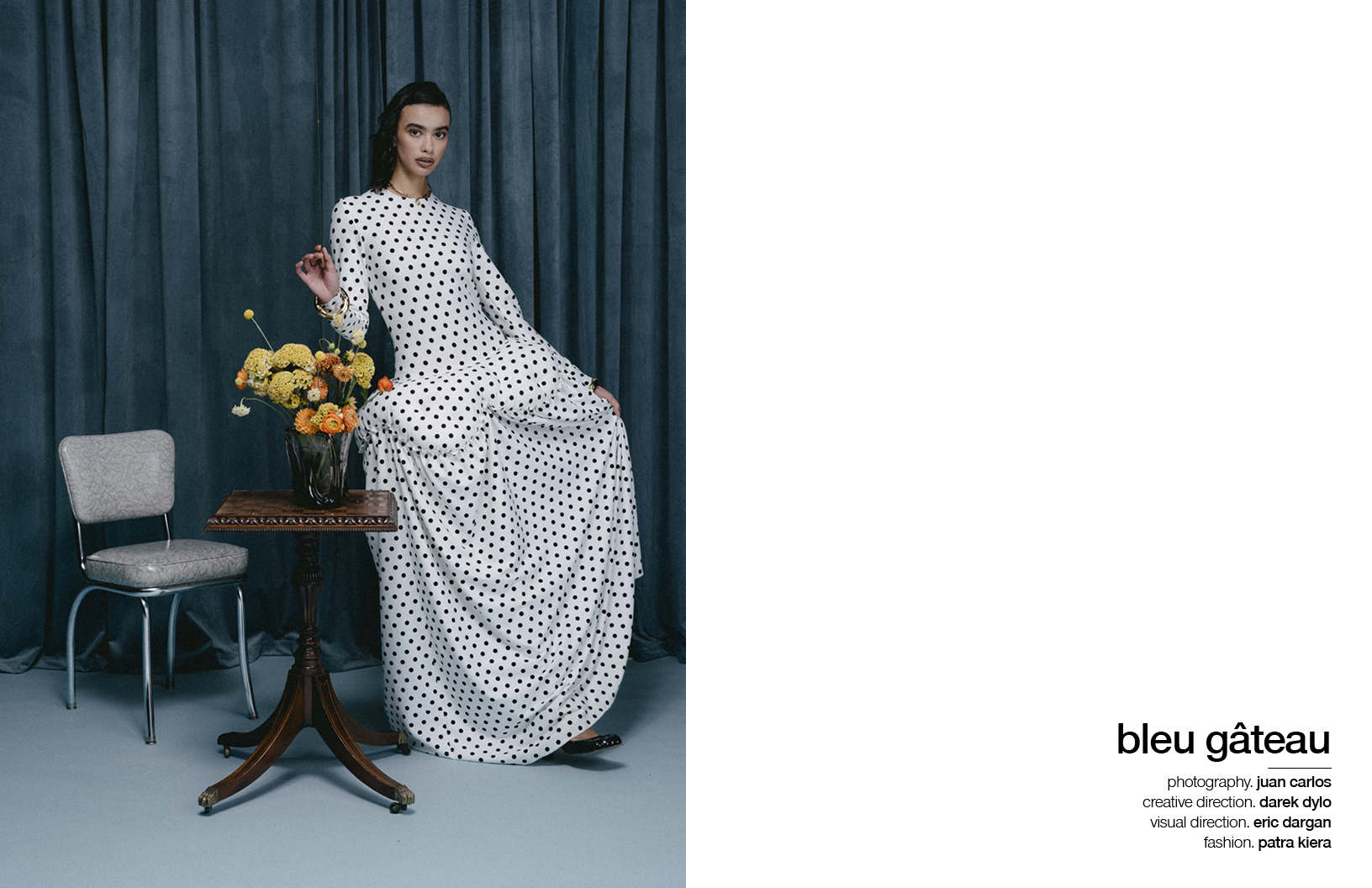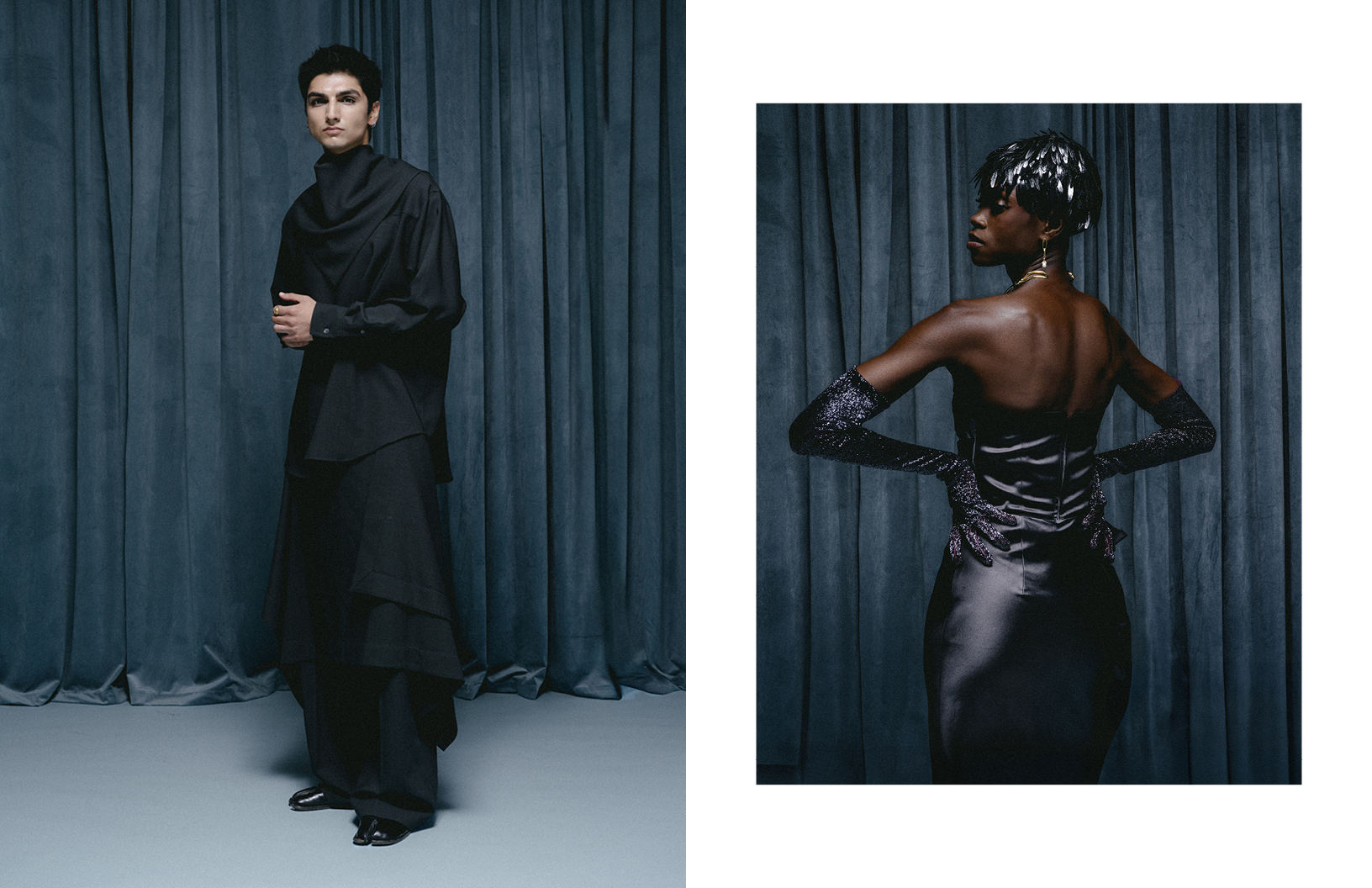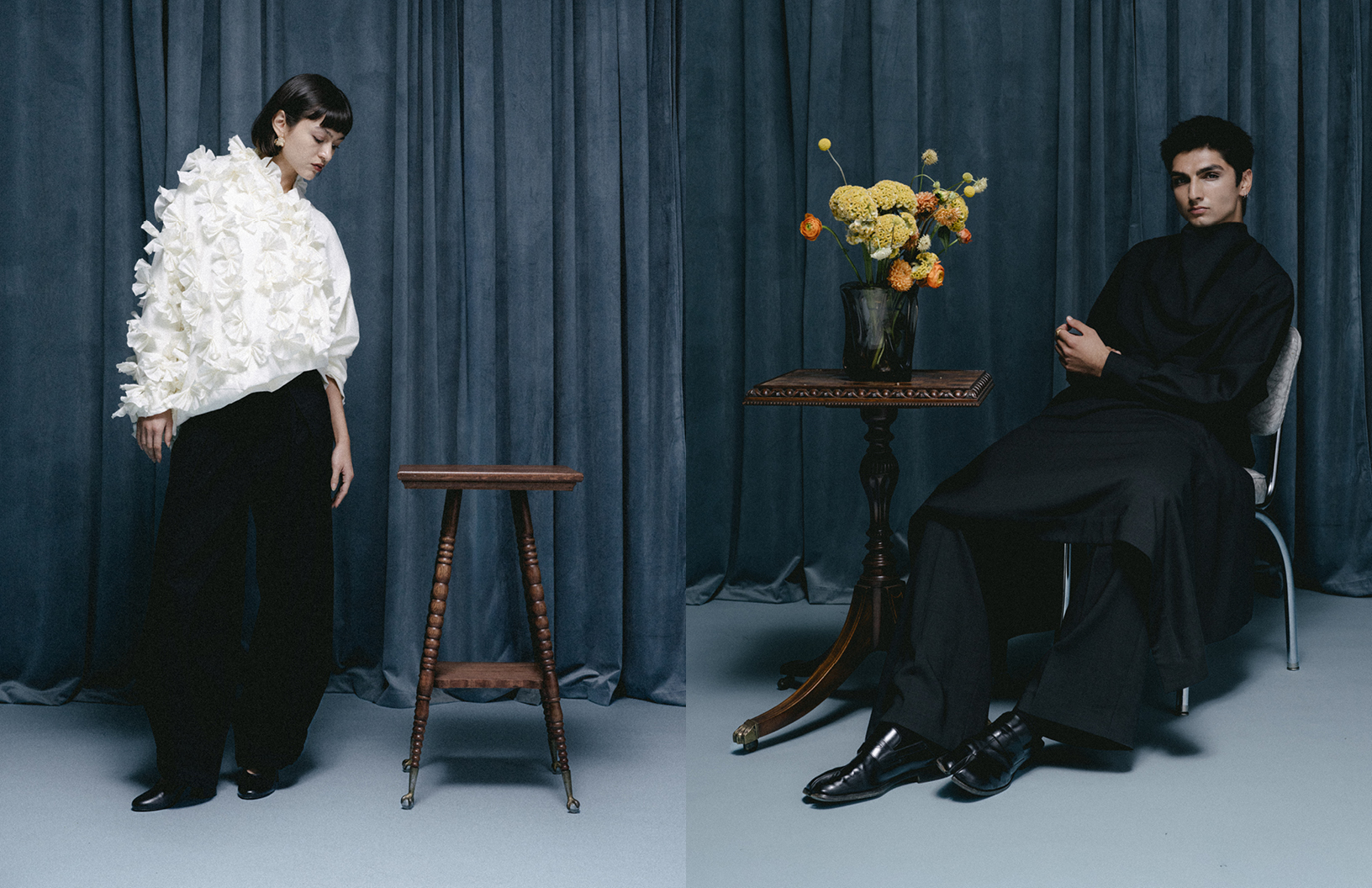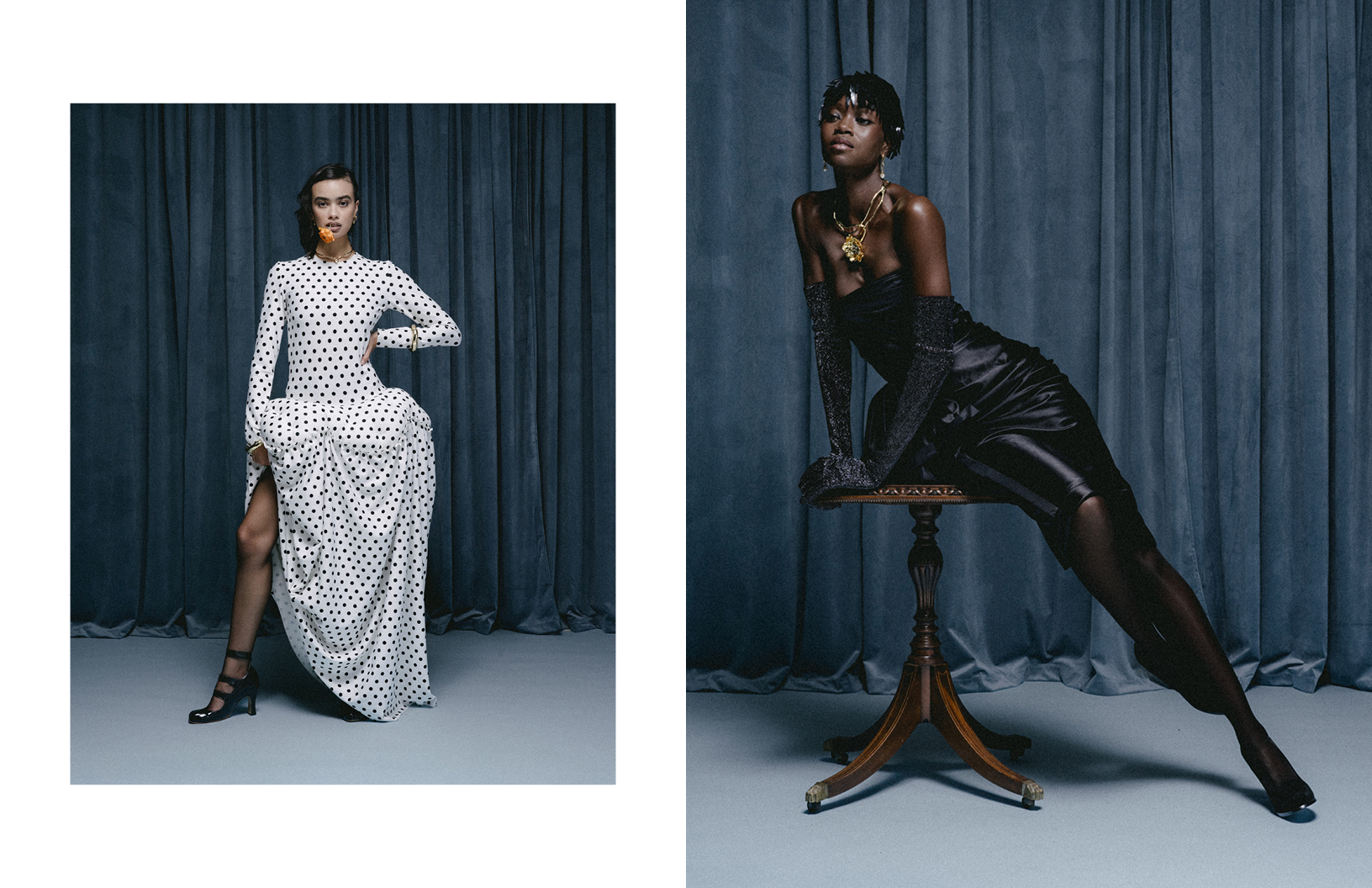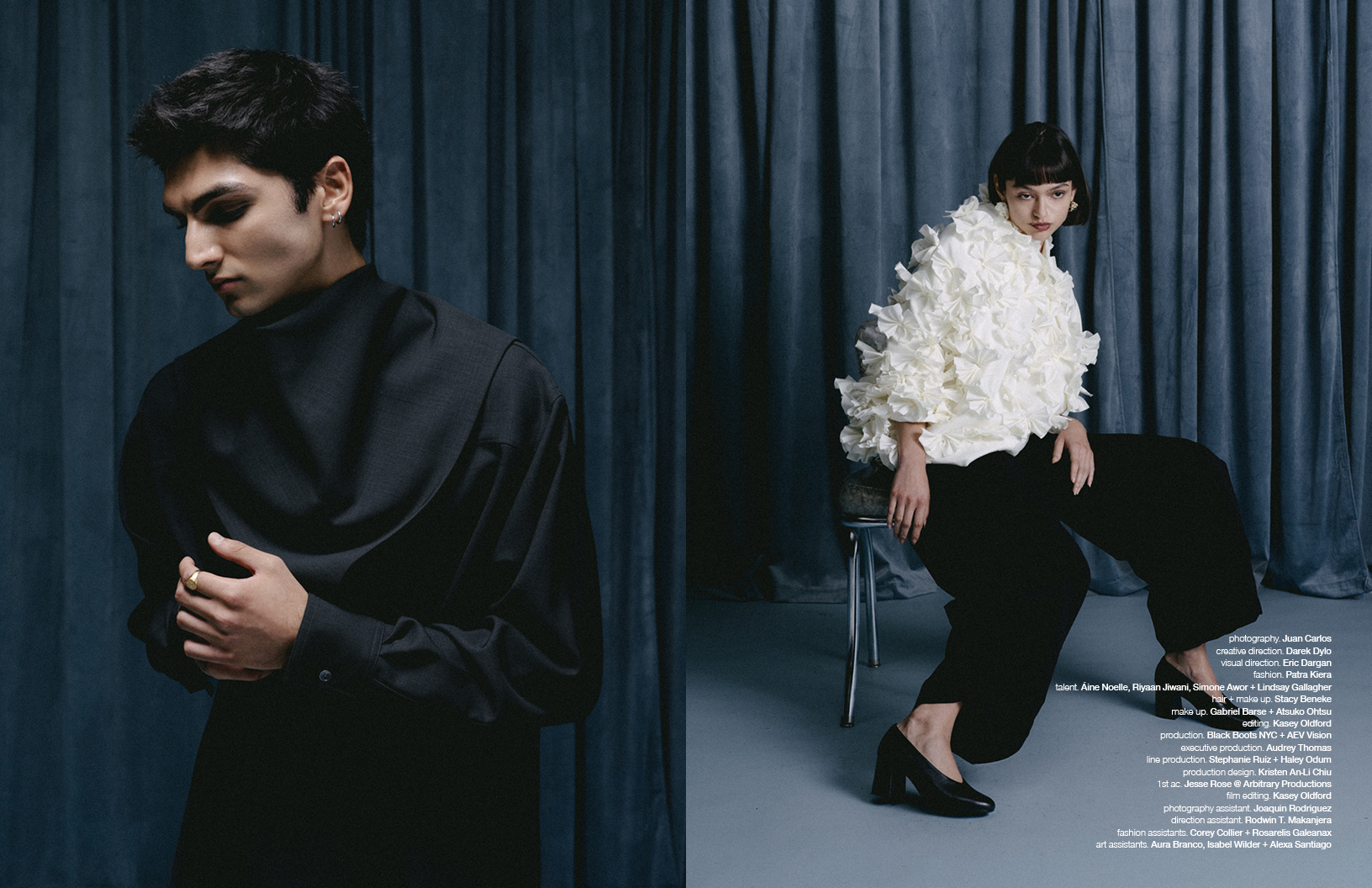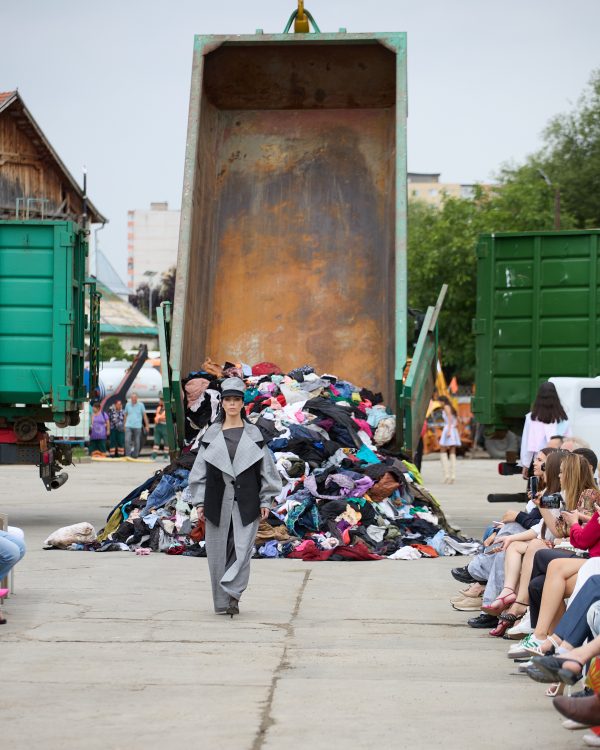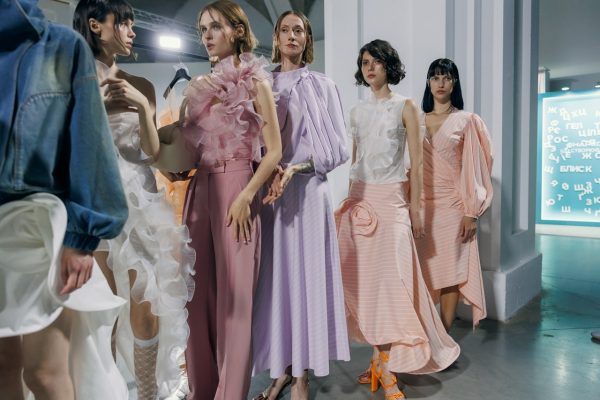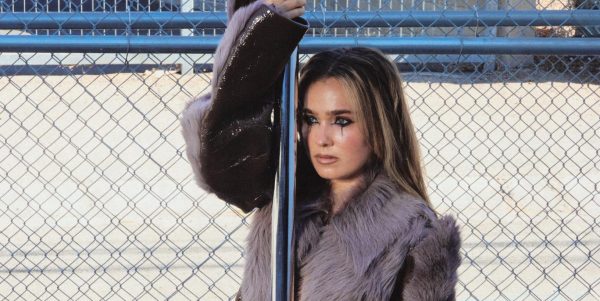Hailing from the American South, fashion is imbued into Katie Martin‘s DNA. Crediting her earliest memories around the sartorial matière back to her aunt’s sewing room in New Orleans, the designer meddled with the idea of fashion for over a decade before fully diving into the craft herself. Years later, Martin’s scope is now refined, inspired by the natural world, and her techniques followed suit.
This photo series, photographed by Eric Zhang and styled by Dominic Louis, gives the subdued tones of the natural world a human form. By wrapping her rough, raggedly beautiful designs around model Melanie Gaydos, Martin crafts a reality all her own. Seemingly disparate pieces come together to form a cohesive image where her immaculate designs take full centre stage. To celebrate the photo series, Martin spoke exclusively to Schön! about her history, inspiration, designs and more.
Can you name a single experience from your past that solidified your interest in art and design?
My memory of my aunt’s sewing room in New Orleans is one of my clearest from childhood – big bay windows, a dress form, folded cloth and vintage clothing. That room felt deeply familiar to me, and later I felt that same familiarity the first time I walked into a vintage store. But the moment that crystallised everything was when I was in my apparel design program and we were shown how to create a gather. I gasped audibly. I had at that point been working with clothing for a decade but had never touched a sewing machine. Years of watching how clothing wrapped around a body solidified – learning about the construction process was closing a loop for me. Something moved gently and firmly into place, and that was the moment I knew this was what I wanted to do.
Your work tends to incorporate elements from nature, whether that takes the form of a transparent horse leather cloak (as in The Host) or the earthy tones we see in this series. How would you describe your relationship with nature, especially as a designer?
Growing up in the South, the natural world had an immanent presence – not as a passive landscape, but an agent in its own right. The forms, sensations and textures have been a constant source of inspiration since childhood. As a designer I believe my relationship to nature should be one of responsibility and stewardship, which extends beyond my impact on the natural world to include the other humans that live in it; the ethics of how, where and from whom I source my materials are as integral to my aesthetic as fabric composition and colour palette. Existing materials are a nearly zero fault item to create with in that you are typically purchasing from an independent business, removing an item from the waste cycle, and contributing little to no additional energy expenditure. I do my best to make them the foundation of my working library; this keeps me present and connected to the natural world through my actions.
Did you approach this shoot with a narrative in mind, or did you see each piece as a distinct work?
I saw them all as distinct pieces of work. When Lou and I began talking about the shoot, I sent him images of my larger installation pieces and he suggested shooting them together. Although they were created as separate works, there is a common aesthetic among them – natural fibres and palettes, texture, and process-driven construction. The narrative evolved from shooting them on a figure. I’ve always believed clothing should come secondary to the body – union is the goal, but the individual should take priority. This is the argument of ego in fashion – who takes precedence in creating identity, the designer or the wearer? I find myself on the side of the wearer; without a body clothing is an unfinished idea. Seeing Melanie embody garments previously meant for display provided new context for the pieces – they felt fulfilled, and the narrative for the shoot became about synthesis.
What were some of the inspirations for the pieces we see in this series?
The body, transition and corporeality are all themes I return to in my work. Two of the pieces (the tulle dress and the rust printed linen dress) were part of a triptych created for a previous exhibition, touching on themes of birth, transformation, and death.
Creating the red dress ended up being my commitment to process. Last year I began developing a collection and testing designs. But the ideas didn’t cohere, and the silhouettes never came through in a way I was happy with. I had started out with fabrics from wholesalers, but using all new materials felt fundamentally at odds with my philosophy and process. So the collection never progressed because the foundation was wrong – the first step I took was incorrect, which meant every following step would be incorrect, and I couldn’t feel my ethics in my work. I ended up taking almost all of the fabric from the collection and repurposing it for the red dress. It was an effort to intentionally and mindfully learn from my mistakes, and allow for old ideas to generate new ones.
How did you connect with model Melanie Gaydos?
Lou suggested her. After our initial conversation about which garments to shoot and the mood or atmosphere we wanted to evoke, the conversation turned to casting. Hers was the first and only name to come up. I have a lot of respect for her work; she’s redefining beauty and creating space for diversity in representation, which is life-changing and affirming for people with marginalised identities. Many of the artists I admire navigate issues of reclaiming agency over how their bodies, sexuality and image are presented; in my view, Melanie is actively writing her own narrative, which is incredibly inspiring to me.
What specific directions did you give photographer Eric Zhang to ensure the energy you wanted was properly captured?
Eric and I are partners, so he was present for the construction of some of the garments and was familiar with the concepts behind them. In conceptualising the shoot we immediately began thinking of how to capture four separate pieces in a cohesive way. We wanted the atmosphere of the shoot to be ethereal and otherworldly, and to show Melanie in a way that was in harmony with the garments and referential to the body. The images he created are exquisite, and perfectly captured what we set out to build.
How long have you worked with your stylist, Louis? How did he make you think about your work differently?
This is our first collaboration and I’m really happy with it. Lou saw potential in garments that I wouldn’t have considered shooting, as they were made for a different purpose previously. I hadn’t seen any of them on a person before, but he was able to envision how they would work in an editorial context and knew how to showcase the garment while highlighting Melanie. He was also essential during the editing process.
What are the biggest challenges presented by a shoot like this?
The shoot itself was smooth; there was great chemistry between everyone in the studio, and I couldn’t have been happier with it. The timing of the shoot proved to be the biggest challenge. A few days after we wrapped I went to the doctor to check on some symptoms I’d been having. That evolved into two months of biopsies and tests, the discovery of lymphoma cells, and finally the retraction of a cancer diagnosis. The project was put on hold during that time, and it wasn’t until after I was cleared that we returned to editing. The shoot ended up bookending a health scare that in some ways focused and internalised the themes already present in my work. Abstract concepts about presence, transition, and temporality became literal for me, and I returned to the work with a deeper respect for the limited time I have to create.
Do you have anything upcoming that you’d like to share with our readers?
At the moment I have few collaborative projects in the works, one of which will hopefully be out in mid-September. I’m also circling back to the development of a collection.
Discover more about Katie Martin’s work on her website and make sure to follow her on Instagram to keep up with her future ventures.
designs. Katie Martin
photography. Eric Zhang
fashion. Dominic Louis
models. Melanie Gaydos
make up. Tony Tulve using Rituel de Fille
creative direction. Katie Martin + Eric Zhang


































































